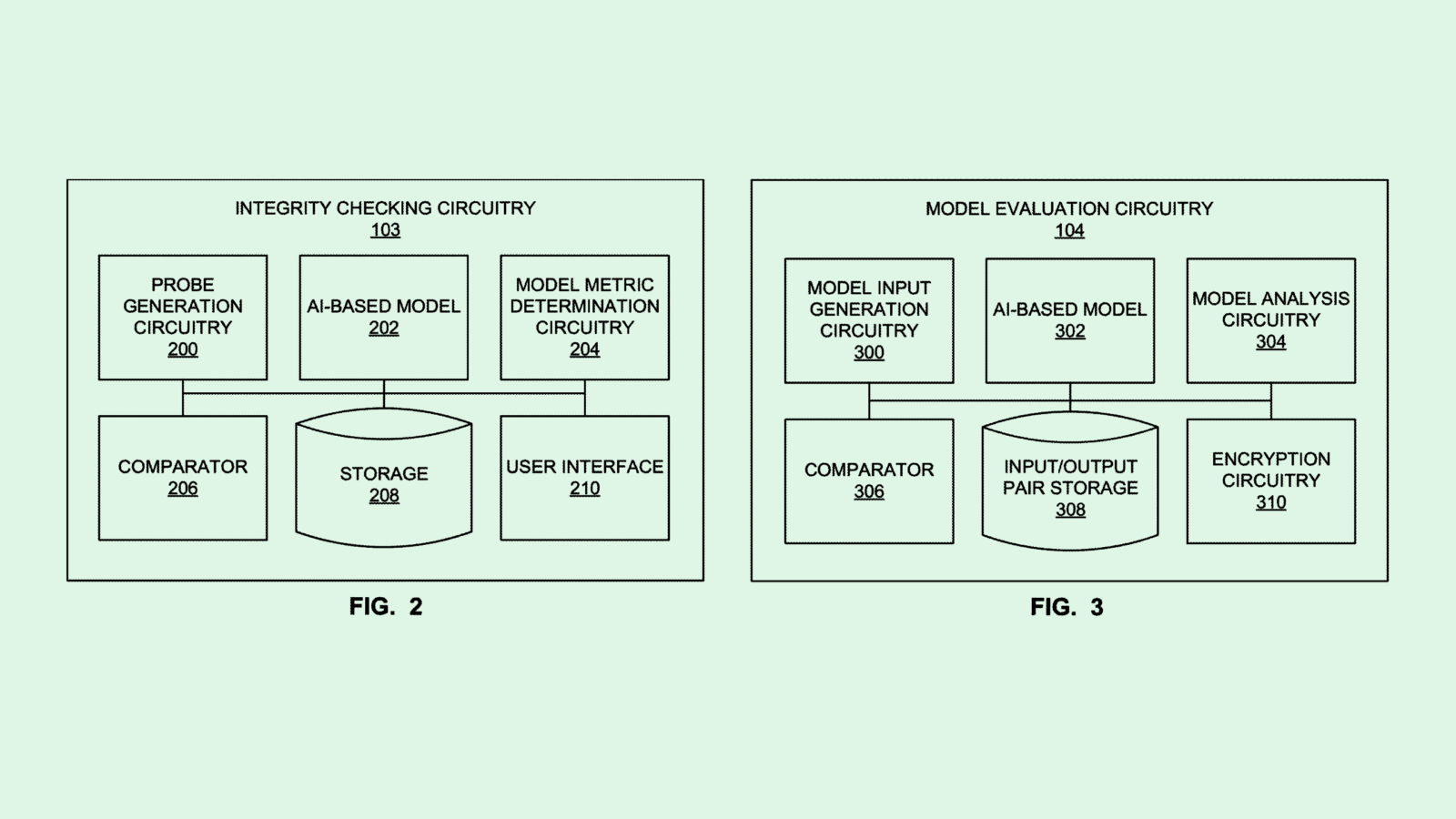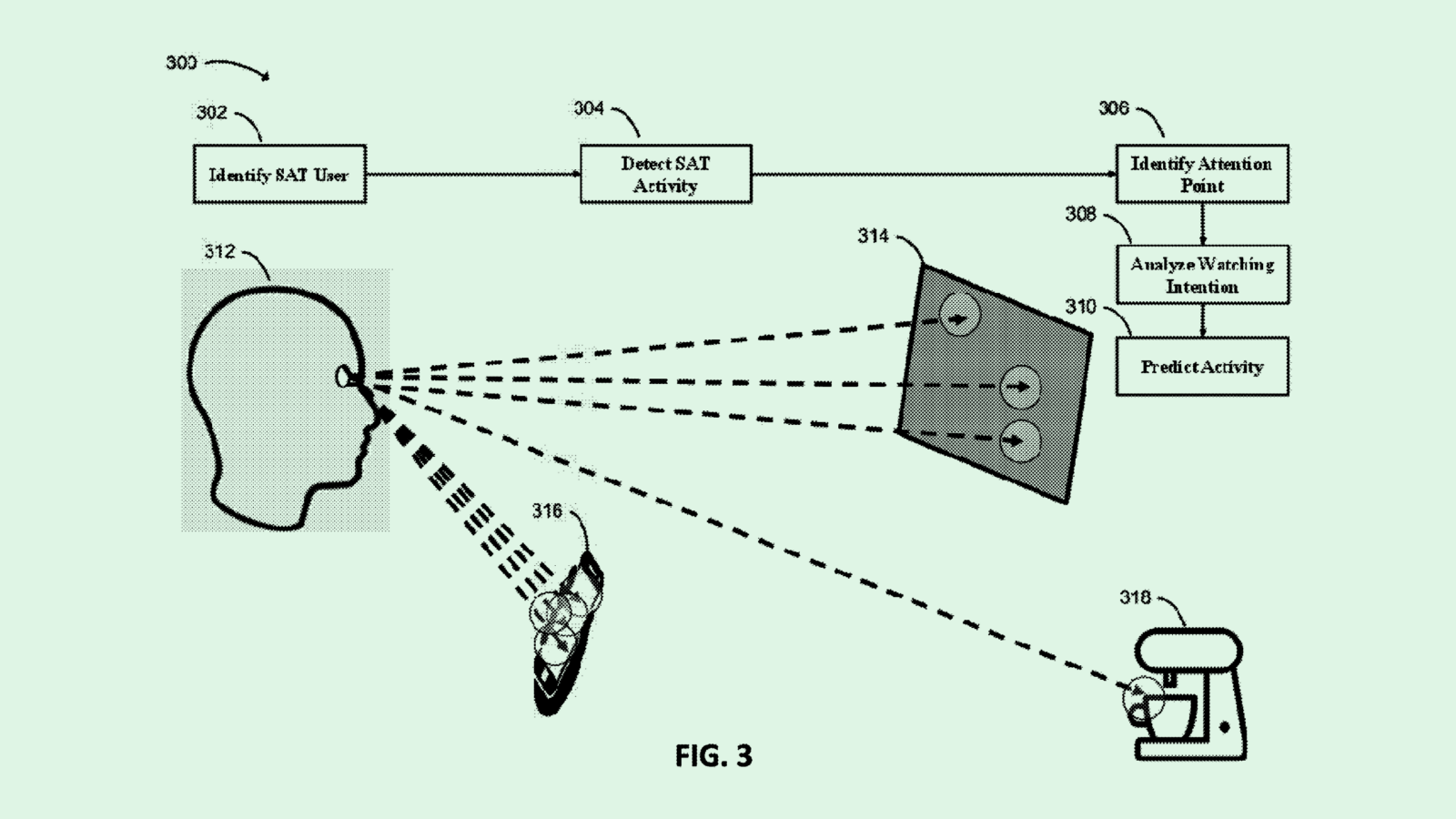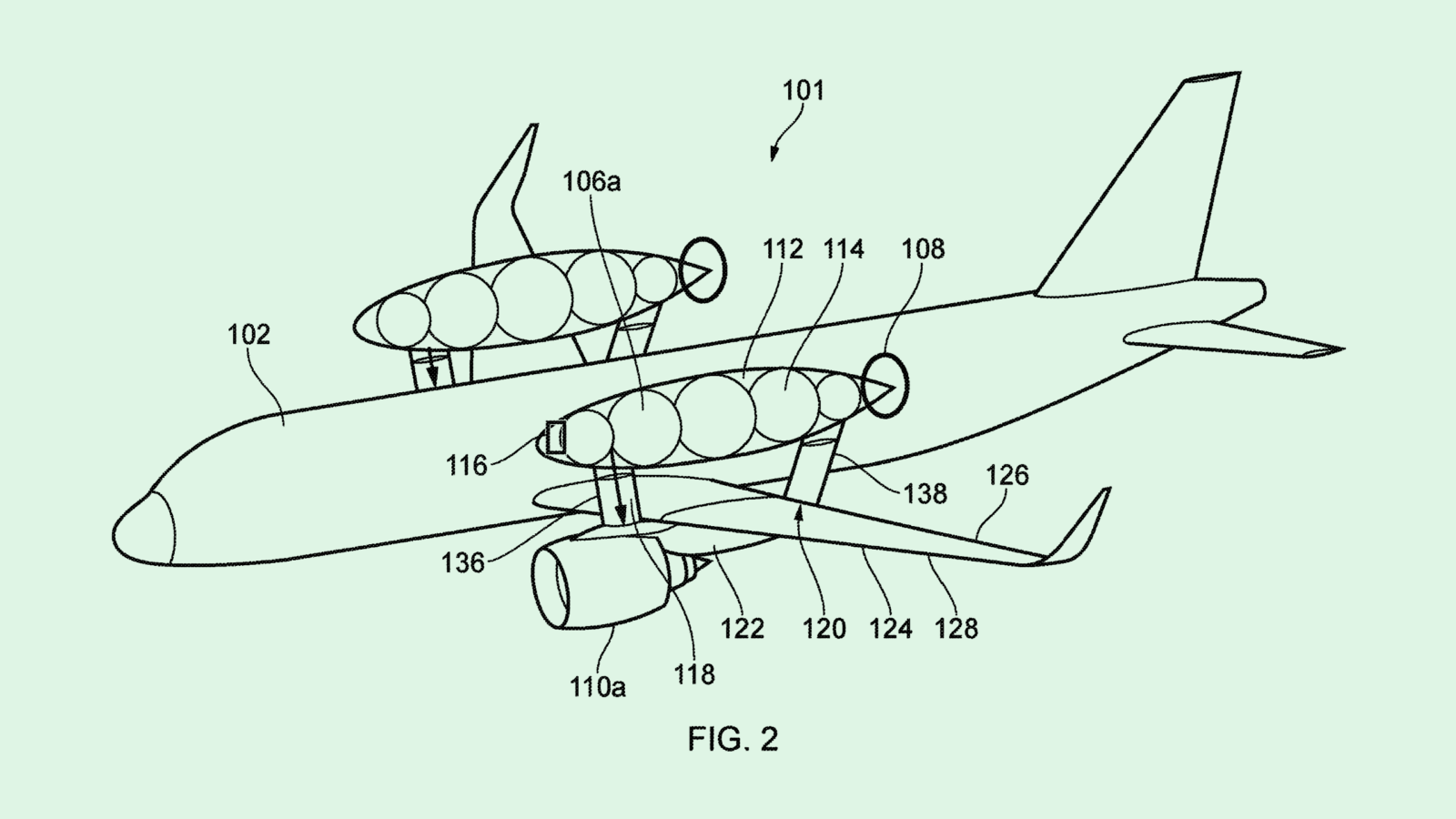Happy Thursday and welcome to Patent Drop!
Intel’s recent patent could help track down when AI slips up after it’s shipped out, highlighting the need for guardrails in the face of rapid model adoption. Plus: IBM may want to use household appliances to place ads, and Rolls-Royce might retrofit conventional airplanes with hydrogen engines.
But first, a quick word from our sponsor, Incogni. Is your email inbox flooded with spam emails? Clutter from spam is not only annoying but poses a massive threat to your online security. But don’t worry, there is a simple solution: Incogni’s data removal service helps you stop spam at its source by retrieving your personal information from data brokers. No more clutter, no more risks of identity theft, just a cleaner inbox and peace of mind. Take control of your online privacy and cut the flood of unwanted emails. Try Incogni now.
Let’s go.
Intel’s Two-Phase Security
Intel wants to give its AI a thorough inspection.
The company filed a patent application for a method to “verify the integrity of a model.” Intel’s system aims to ensure that machine learning models are secure after they’ve been deployed.
“After the model is deployed to the cloud service provider, an attacker can tamper with the model so that the model that is distributed to the implementing devices is not the same as the trained model,” Intel said in the filing.
Intel’s tech method puts AI models through two phases of evaluation: one performed offline, and another performed online in a “trusted execution environment.” In the offline phase, a model is fed a number of inputs meant to “excite” its neurons, which comprehensively tests its capabilities. The outputs the model creates are then stored to be used as a reference.
In the online testing phase, those inputs are fed to the model again, and its outputs are compared to the reference responses it created in the offline phase. If the values don’t match, Intel noted, there’s a chance the model has been tampered with.
Since AI models often have multiple layers, Intel’s filing notes that this system uses a tactic called “layer-specific probing” for additional security. This means that this testing method is performed on the model layer by layer to make sure each one works as it should and no security flaws slip through the cracks.

Intel’s tech hits on a growing issue as AI adoption continues its meteoric rise: observing models after deployment to make sure they don’t slip up. “This is what CIOs should be thinking about – that they need to have a trusted environment for AI,” said Brian Jackson, principal research director at Info-Tech Research Group.
These capabilities may be useful to test for more than just tampering, Jackson noted. It could help keep a close eye on model degradation, such as when AI starts to hallucinate or exhibit bias.
And in order to establish trust in AI, technology leaders are “going to have to show the business users that there’s a lot of safeguards in place, that there’s a lot of precautions taken, that they’re constantly measuring the outputs and making sure that they’re in line with expectations,” Jackson said.
But AI development and deployment may be happening too fast for the safeguards to keep up, he said. AI tools are being rapidly adopted, not only by larger organizations and enterprises, but by the broader public via easily accessible large language models. Some of these tools have already shown evidence of hallucination and data leaks.
“There’s questions about what data is leaking out and getting into models that are publicly available, and perhaps even what business processes are being affected, because people are making decisions based on AI models that are out there in the world,” Jackson said.
Tackling this problem could help Intel differentiate itself from competitors — especially as it’s being trounced in the AI chip market by the likes of Nvidia. This could be an “extension of a strategy that Intel has deployed in other places,” said Jackson, by showcasing that their processors have built-in security that can make AI safer.
How Can You Stop The Flood of Spam Emails?
Spam emails not only clog up your inbox but also increase the risk of identity theft and phishing attacks. The very fact that you’re receiving spam emails tells you that your email address is being bought and sold online.
So how can you stop the spam? You could spend hundreds of hours manually blocking spam addresses and unsubscribing from mailing lists… or you could let Incogni automate this process for you.
With Incogni’s data removal service, your personal information is removed from data brokers and people search sites, dramatically cutting down the spam you receive and keeping your personal information safe.
Protect your inbox and reduce the chance of falling victim to phishing attacks.
IBM’s Targeted Ads
IBM might want to go the extra mile to personalize ads.
The tech firm filed a patent application for “smart advertising timing” in streaming from “internet of things” sensors. IBM’s patent details a system that uses your smartphone and other household devices, such as appliances, speakers, or cameras, to time when to play commercials.
IBM notes that its invention aims to “dynamically maximize advertisement time in streaming video based on user tolerance in real time and manage the advertisement insertion time and advertisement length based on user activities.”
If a user opts into this experience, their activities would be monitored while they’re streaming. Opting in allows for data collection through various household sensors. These will track movements, gestures, or activities that indicate how engaged they are with whatever they’re watching.
This data will help IBM’s system determine a user’s “advertisement tolerance level,” or how receptive they may be to seeing ads at any given moment. That metric is used to determine the best time to show an ad.
For example, if a user has their eyes glued to their TV during a particularly engaging part of a movie, the system may delay showing an ad until later. If they are out of their seat grabbing a snack, or scrolling on their phone during their fifth rewatch of “Gilmore Girls,” then the system may determine that it’s safe to show an ad with minimal disruption.

While IBM’s filing notes that users must opt in for this tech to function, it could still present privacy issues depending on how the feature is presented to the user, said Tricia Allen, VP of business development at ad tech firm Reticle AI.
For example, if this is positioned as a tool that’s meant to make users’ viewing experience more convenient, but doesn’t explain exactly how, users might agree without being fully informed. And because IBM isn’t itself a content provider, users’ behavior data could travel farther than they realize. “The black box part of this that they’re not realizing is that they’re opting in to have their data shared,” said Allen.
This patent is likely far from the last of its kind that we’ll see coming from tech firms, said Allen. Marketers are looking for new ways to get to know their target audiences, whether it be while you’re streaming, shopping, or even on the road. But many advertisers aren’t even using this data to the fullest, said Allen.
“I think just because we have the ability to get it, we feel like we need it,” she said. “But if you’re not understanding the insights within that data, what is it really good for?”
Plus, there are much less invasive ways to advertise effectively, said Allen. Contextual advertising, or placing ads based on the emotion and context of the content, rather than the person, can be just as successful without invading privacy, said Allen. This could look like pairing an uplifting holiday ad with an article about Christmas travel tips, or placing an ad for running shoes in a sports documentary.
“It’s not an audience-based understanding of emotion. It’s implied that if the content’s emotion is X, chances are you’ll be in a certain mindset,” said Allen. “[Users] are going to have greater trust and reliability in your brand knowing that you are protecting their personal information.”
Rolls-Royce Flies Hydrogen
Rolls-Royce may want to give traditional airplanes a hydrogen makeover.
The British aerospace and defense firm filed a patent application for a “cryogenic fueled aircraft.” The patent details a way to complement a plane’s typical engine with one fueled by hydrogen.
“In order to limit emissions of carbon dioxide, use of hydrogen as an alternative to hydrocarbon fuel in gas turbine engines has historically only been practical in land-based installations,” Rolls-Royce said in the filing.
Notably, Rolls-Royce claims this design can be retrofitted to existing aircraft, allowing operators to switch between using hydrogen and traditional jet fuel.
Because hydrogen has a very low density in its gaseous form (and thereby takes up a lot of space), this patent pitches storing hydrogen cryogenically, or at extremely low temperatures in its liquid form.
The filing also suggests safety improvements by keeping the hydrogen fuel tanks external to the fuselage, reducing the risk to passengers in the event of a leak or fire. The fuel tanks themselves are also separate from one another, with each tank containing multiple hydrogen containers. That creates failsafes if one goes haywire.

Flying isn’t exactly great for the environment. Aviation accounted for roughly 2% of global carbon emissions in 2022, according to the International Energy Agency. But much of the industry recognizes this problem, with members of the International Air Transport Association — which includes airlines such as United, Delta, and American — committing to reaching net zero emissions by 2050. The Federal Aviation Administration has made similar goals.
Rolls-Royce has been testing the waters with hydrogen as an alternative for several years now. The company has partnered with discount airline easyJet to build and test hydrogen-powered engines, and launched the Hydrogen in Aviation alliance in partnership with easyJet and Airbus last September.
However, hydrogen as a power source faces some large barriers in many use cases. As the patent seeks to address, hydrogen needs to be kept at extremely low temperatures and high pressures due to its low energy density. The transportation, storage, and dispensing of this fuel would require significant and costly changes to infrastructure.
Plus, the cost of producing green hydrogen is prohibitive, with a Harvard University study published this week reporting that notoriously expensive carbon capture may be a more cost-effective way of cutting emissions.
And despite the company’s continued research in the area, Rolls-Royce CEO Tufan Erginbilgic told media in November that hydrogen has a long way to go before it could be considered a legitimate alternative.
Extra Drops
- Google is taking language lessons. The tech giant filed a patent for “on-device multilingual speech recognition.”
- Microsoft wants to use AI for QA. The company filed a patent application for “quality assurance for digital technologies using large language models.”
- Snap wants to get you dolled up. The social media firm is seeking to patent “augmented reality beauty product tutorials.”
What Else is New?
- OpenAI said it disrupted more than 20 “operations and deceptive networks” that used its platform to attempt to influence election outcomes.
- Internet Archive’s “The Wayback Machine” was hacked in a data breach impacting 31 million users.
- Amazon is adding Apple TV+ to its channels store for streaming later this month.
Patent Drop is written by Nat Rubio-Licht. You can find them on Twitter @natrubio__.
Patent Drop is a publication of The Daily Upside. For any questions or comments, feel free to contact us at patentdrop@thedailyupside.com.

